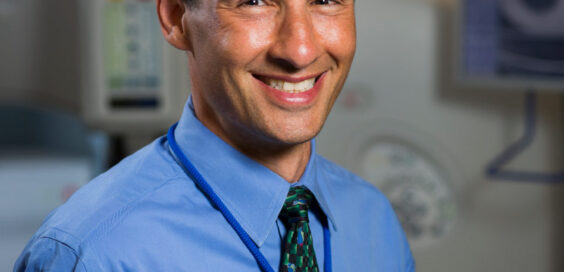
Test Detects Lung Cancer at Its Most Treatable Stage
Posted by Dustin Horton // May 4, 2021 // Local Business
By Walter Silbert, MD
Lung cancer causes more cancer-related deaths each year in Tompkins and surrounding counties than any other type of cancer. The most important risk factor for the disease is smoking, which results in approximately 90 percent of all U.S. lung cancer cases. One reason the disease is so lethal is that lung cancer is not typically discovered until a patient develops symptoms at which point successful treatment is less likely.
An early detection lung cancer screening offered at Cayuga Medical Center and Schuyler Hospital has proven very successful in identifying early-stage cancers when treatment can be most effective. The lung cancer screening uses low-dose computed tomography (LDCT). It is the only screening test for lung cancer that is recommended by the U.S. Preventive Services Task Force (USPSTF), a panel of national medical experts. The test uses low doses of X-ray radiation to make detailed pictures of the lungs, try to see it here. It is painless, noninvasive, and like the use of mammography in annual breast cancer screenings.
Who is at risk?
Smoking is by far the leading risk factor for lung cancer. About 90% of lung cancer deaths are thought to result from smoking. The risk for lung cancer among smokers is about 20 times higher than among non-smokers. The longer you smoke and the more packs a day you smoke, the greater your risk.
Who should be screened?
An annual LDCT lung cancer screening is recommended for people 50 to 80 years old who have a 20 pack-year smoking history, currently smoke or have quit within the past 15 years. A pack-year calculates how much a person has smoked in their lifetime. One pack-year is the equivalent of smoking an average of one pack per day for a year. This new 2021 screening recommendation replaces the USPSTF’s 2013 recommendations for annual LDTC screenings for those 55 to 80 years who had a 30 pack-year smoking history, currently smoke or have quit within the past 15 years.
What are the test’s benefits?
Annual LDCT screenings can prevent a substantial number of lung cancer–related deaths for those at high-risk for the disease. Screenings can detect lung cancer at an earlier stage prior to onset of symptoms and when treated at its early stages lung cancer has a better prognosis.
What are the test’s risks?
Most medical tests involve a risk. That is why LDCT screening is recommended only for adults who have no symptoms of lung cancer, but who are at high risk for developing the disease because of their smoking history and age. A significant risk associated with LDCT screening is a false-positive finding that occurs when the screening’s test results indicate there may be cancer when there is not.
When should screening stop?
Testing stops after age 80, when the patient has not smoked for 15 years and is no longer at high risk for lung cancer, or when other health problems make a patient unwilling or unable to undergo treatment for lung cancer if detected at LDCT screening.
What happens after an LDCT lung screening?
A radiologist reviews the images and rates the likelihood of the patient developing lung cancer. The results are forwarded to the patient’s primary-care provider to review the results with the patient. About 90 percent of the tests find no cancer, or a low likelihood for developing the disease, and a re-test is recommended in 12 months. When test results show a higher risk for developing lung cancer, the LDCT test may be repeated sooner, and other diagnostic tests may be recommended.
Is the cost of lung screening covered by insurance?
Medicare Part B and some private health insurance covers a lung cancer LDCT screening once per year when a person meets several conditions related to their smoking history
Where are LDCT screenings done?
Screenings can be scheduled at Cayuga Health System locations at Cayuga Medical Center, (607) 274-4046, and at Schuyler Hospital, (607) 535-8613.
Dr. Silbert is board certified in diagnostic radiology and is on the medical staff of Cayuga Medical Center, where he and his diagnostic radiology colleagues, supervise and interpret LDCT lung cancer screening exams. The radiologists provide a full spectrum of diagnostic medical imaging exams and perform interventional procedures that are accredited by the American College of Radiology Committee on Quality and Safety.













